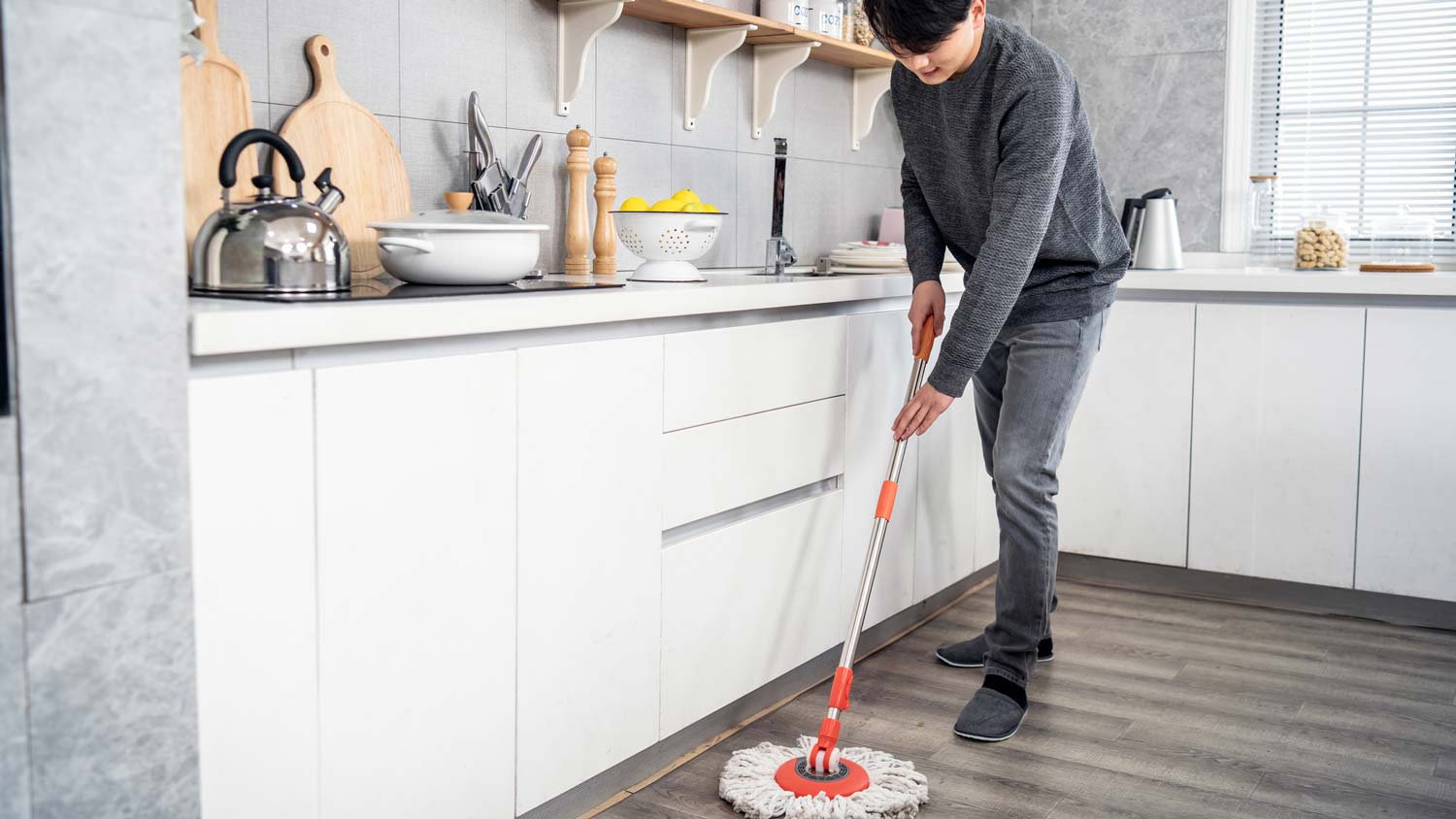
Clean walls are an important part of a well-kept house. Use this wall cleaning cost guide to see what it would cost to hire a professional to get the job done.
Cleaning your refrigerator can be a quick and rewarding task


The refrigerator is one of the hardest-working appliances in our homes, but most of us don’t clean it as often as we should. Between everyday use, spoiled food, sticky spills, and fallen crumbs, the fridge can quickly go from clean and organized to a bad-smelling breeding ground for bacteria. Learn how to quickly clean your refrigerator to keep it looking and smelling its best and ready for grocery day.
Before you get started cleaning the refrigerator, gather your tools and supplies so they’re handy when you need them. Because you’ll be removing food from the refrigerator, you’ll want to be able to work quickly once you get started.
In your spray bottle, mix 1 part white vinegar with 2 parts water for a food-safe fridge cleaner. When you’re ready to begin, unplug your refrigerator, as you’ll be cleaning the coils and drip pan and it’s safer if the fridge is powered off for those steps.
Your first step will be to remove everything from the refrigerator. According to the U.S. Department of Agriculture, they recommend that food not remain out of the refrigerator for more than two hours, which is more than enough time for a full fridge clean-out. If you’re concerned about food spoilage, you can store perishables in coolers with ice packs while they’re out of the fridge. This is a great time to toss expired or unused items.

Next, take out any removable drawers, shelves, and bins. It’s important to let these items come to room temperature before washing them, as cold glass and plastic can crack when they come in contact with hot water. Use a brush and dustpan or vacuum to clean up any crumbs or debris that remain inside the fridge.
Using a sponge or rag and your vinegar and water spray, wipe down all interior surfaces, including the refrigerator walls, any shelves that cannot be removed, the bottom of the refrigerator, and any ledges or shelf and drawer tracks. If you encounter any stubborn sticky spills, lay a paper towel soaked in warm water on the spill to loosen it up and make it easier to wipe away.
Once the drawers, shelves, and bins you removed earlier have come to room temperature, wash each one thoroughly with hot water and dish soap. Take care when handling glass components, as they can get slippery and you’ll want to avoid breaking them. Make sure to thoroughly rinse all soap residue and fully dry all pieces before replacing them in the fridge.

Once you’ve cleaned the inside of the fridge, it’s time to move on to the outside.
Wipe down the exterior of the fridge, including the doors, handles, and sides. If your fridge is stainless steel, use a cleaner specifically for cleaning stainless steel.
Using soapy water and a dishrag or sponge, wipe down the rubber seals around the fridge door. Avoid using your vinegar solution, as vinegar can damage rubber and compromise the seal.
Remove and empty the refrigerator’s drip pan. If you aren’t sure where the drip pan is located, consult the manual. They’re usually found at the bottom of the fridge and accessed from either the front or back. Wash and dry the pan and replace it.
If you encounter any rust spots on the exterior of the fridge or the drip pan, remove the rust from the metal to keep it in good condition.
Using a coil brush, carefully brush the condenser coils to remove built-up dust. If you don’t have a coil brush, you can gently use a vacuum cleaner with a brush attachment to clean the coils.
Vacuum around and under the refrigerator.
Now it’s time to put all of your food back in the refrigerator. Before replacing each item, wipe down the exterior of the container so you aren’t introducing drips or sticky residue back into your clean fridge. This is a great opportunity to reorganize your fridge’s contents to make items easier to find.
It may be tempting to deep clean your freezer or clean your ice maker when you’re cleaning your fridge, but it’s best to do that separately, as your freezer may need extra time to defrost and you’ll want all of your fridge food to be cold and sealed up inside the refrigerator during that process.
From average costs to expert advice, get all the answers you need to get your job done.

Clean walls are an important part of a well-kept house. Use this wall cleaning cost guide to see what it would cost to hire a professional to get the job done.

Ammonia for household use can help do everything from making the toughest chores a breeze to repelling pests of all sizes to even feeding your houseplants. Find out some of the best, most surprising ways to use ammonia around the house.

Flat paint is great for hiding imperfections but presents issues with cleaning. Learn how to clean walls with flat paint the right way in this simple DIY guide.

Construction leaves dust and debris in its wake. If you hire a pro to handle it, here are the post-construction cleanup questions you should be ready to answer.

A home maintenance checklist can help you keep on top of necessary tasks and repairs. Learn how to keep your house in good condition and avoid costly problems.

A moldy dishwasher can cause unpleasant smells and unsanitary dishes. Learn how to clean a moldy dishwasher with this DIY guide.